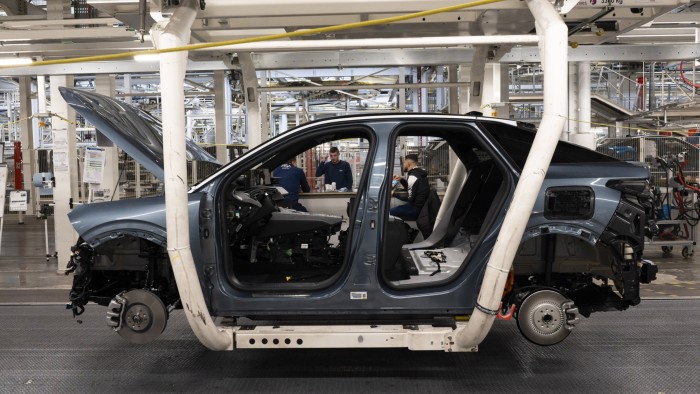Unlock the Editor’s Digest for free
Roula Khalaf, Editor of the FT, selects her favourite stories in this weekly newsletter.
The thought of a vehicle driven by executive committee does not inspire confidence. Investors in Stellantis marked its shares down sharply on news that chief executive Carlos Tavares had resigned. Until a successor is appointed, a newly formed committee will take the wheel, led by chair John Elkann.
Given the depths of the pit that Stellantis finds itself in — with the stock down more than 40 per cent so far this year — the share price reaction reflects the fact that the executive’s departure does not take the carmaker much closer to recovery.
Stellantis is grappling with a failed bet. The group’s burst of profitability — with operating margins in 2023 60 per cent higher than those of rival Volkswagen — turned out to be the result of unsustainable price rises during the post-Covid supply shortages. When availability returned to the market, consumers deserted its models in droves. The resulting inventory build-up is only gradually being reversed.
It can be difficult for the architect of a tailspin to be the one to right course. Tavares, for instance, engaged in an extensive management shuffle in October, which involved the departure of group chief financial officer Natalie Knight. While “deputy heads must roll” is not an uncommon response when a company runs into trouble, it felt difficult to square with the company’s — essentially strategic — misfire.
Tavares, by all accounts a strong personality, also managed to cross swords with many of Stellantis’s key stakeholders. US dealers sounded the alarm in October, writing an open letter expressing their concerns over the group’s strategy. Italy’s deputy prime minister Matteo Salvini demanded an apology after a testy parliamentary session. Trade unions in Italy and France have expressed concerns about the group’s cost cuts.
While Tavares was increasingly unlikely to serve out his full term, which would have expired at the start of 2026, this abrupt swerve leaves Stellantis driverless at a critical time.
Clearing excess US inventory is the first step of any recovery plan. But the build-up is a symptom, rather than the cause, of the group’s troubles. The root is the fall in its US market share, which has declined from 14 per cent in 2019 to about 8 per cent today, on Citi data. Stellantis, which is launching a slate of new models needs to grapple with more fundamental questions — including its pricing, margins and production footprint — sooner rather than later.
On top of its self-inflicted woes, there are the ills wreaking havoc on the European car industry. True, Stellantis has negligible sales in the highly competitive Chinese market. But sluggish growth in its core markets and an uncertain transition to electric vehicles already present a substantial risk that Stellantis’s restart stalls before it really gets started.
Read the full article here

